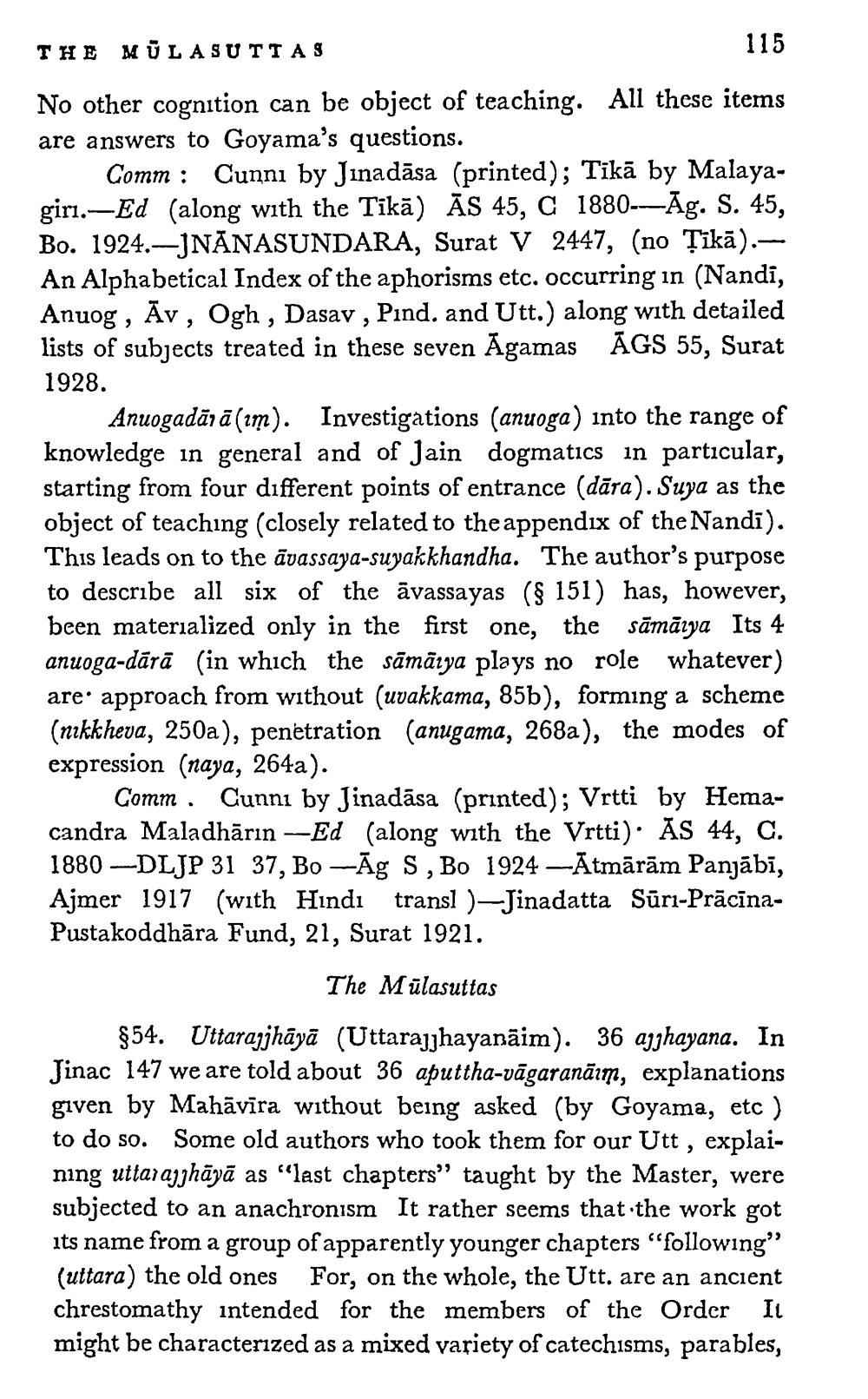________________
THE MŪL ASU TTAS
115 No other cognition can be object of teaching. All these items are answers to Goyama's questions.
Comm : Cunni by Jinadāsa (printed); Tīkā by Malayagiri.—Ed (along with the Tikā) ĀS 45, C 1880---Āg. S. 45, Bo. 1924.-JNĀNASUNDARA, Surat V 2447, (no Tīkā). An Alphabetical Index of the aphorisms etc. occurring in (Nandi, Anuog , Āv, Ogh , Dasav , Pınd. and Utt.) along with detailed lists of subjects treated in these seven Āgamas ĀGS 55, Surat 1928.
Anuogadārā(im). Investigations (anuoga) into the range of knowledge in general and of Jain dogmatics in particular, starting from four different points of entrance (dāra). Suya as the object of teaching (closely related to the appendix of the Nandi). This leads on to the āvassaya-suyakkhandha. The author's purpose to describe all six of the āvassayas (§ 151) has, however, been materialized only in the first one, the sāmāya Its 4 anuoga-dārā (in which the sāmāya plays no role whatever) are approach from without (uvakkama, 85b), forming a scheme (nikkheva, 250a), penetration (anugama, 268a), the modes of expression (naya, 264a).
Gomm . Cunni by Jinadāsa (printed); Vrtti by Hemacandra Maladhārın --Ed (along with the Vrtti). AS 44, C. 1880 -DLJP 31 37, Bo -Āg S, Bo 1924 -Ātmārām Panjābī, Ajmer 1917 (with Hindi transl )Jinadatta Sūri-PrācīnaPustakoddhāra Fund, 21, Surat 1921.
The Mülasuttas $54. Uttarazjhāyā (Uttarajghayanāim). 36 ajghayana. In Jinac 147 we are told about 36 aputtha-vāgaranāım, explanations given by Mahāvīra without being asked (by Goyama, etc ) to do so. Some old authors who took them for our Utt, explaining uttarajghāyā as “last chapters" taught by the Master, were subjected to an anachronism It rather seems that the work got its name from a group of apparently younger chapters "following" (uttara) the old ones For, on the whole, the Utt. are an ancient chrestomathy intended for the members of the Order IL might be characterized as a mixed variety of catechisms, parables,




